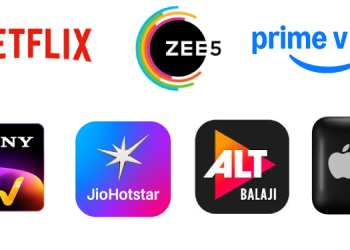A Tweet from trade analyst Sreedhar Pillai on 8th June 2022 said, ‘OTT major platforms have now stopped buying small & medium Tamil & Malayalam films for direct premieres. Reason is pricing is high & return on investment (number of views) is poor. Now preference is for films which had a theatrical run (hit/flop) and buy at throwaway price.’ It has since been doing rounds on social media platforms.
The entire concept of OTT was to encourage the small and medium films. But now with the production giants targeting OTT releases the small and medium quality films are deemed to suffer in the coming years. A BIG BACKLASH for the industry.
— Dr. Critizen (@drmkd7) June 8, 2022
Is this true? We asked practitioners. Because if it is, it could have ramifications on the burgeoning OTT space that has a long tail.
As per a report by the Confederation of Indian Industry and Boston Consulting Group, OTT platforms have a 7 to 9 percent market share in India’s $27 bn M&E industry currently and this is expected to increase to 22 to 25 pc by 2030. The OTT sector witnessed huge growth in the pandemic but may be seeing a reversal with cinema halls returning to full seating capacity.
“Things are getting back to normal and every movie producer wants to monetise the movie on a larger scale, hence they opt for theatre release over OTT platforms. Similarly, in terms of OTT platforms, movie content is a programming strategy; they also have strategies planned around original content like web series, which provides them more subscribers and revenue. The direct OTT release formula will also decline with the course of time. There will be two types of films which will be made – the ones which are customised for OTT release, and ones made for theatre release followed by OTT. The theatre owners will benefit out of this,” adds an industry practitioner who did not wish to be named.
An industry expert who produces content for OTT platforms also shares the opinion.
“During the peak of pandemic, if the OTT platforms would have looked for acquiring theatre-released movies, there would have been a scarcity of content for them. Around 10 years back, movies were made for satellite rights as it was doing well over theatres. That trend has moved to OTT platforms,” he says.
He explains that when it comes to OTT platforms, they look to purchase content that will cater to current subscribers or help add new ones. There should be some set of standard or filter that has to be brought in to attain this, he contends, reasoning why OTT platforms have stopped buying small and medium films for direct premieres like they used to.

“Major OTT platforms are restricting themselves to star-studded regional movies to be able to compete with the theatrical release and stay relevant. To be a long-time player in this highly competitive market, you need to be able to both engage and retain and at the same have a sizeable catalogue. This requires the platform to have the latest movies that are not available elsewhere with a broad range of shows and movies. Acquiring small-time regional movies at throwaway price may not drive consumption but definitely contributes to the catalogue size. OTT aggregation and mergers are on the anvil and having a large catalogue would definitely help build the valuation. Not to mention, it’s a typical chicken and egg situation. Valuation is dependent on both consumption and content,” says Kowshik Komandur, AVP, OnMobile Global Limited.

“The major OTT platforms have already reached a level of stagnancy in terms of growth. They have already bought big star-studded movies and set the expectation high for a lot of smaller or medium-budget movies. Initially when the OTT platforms came into the industry, like the cab aggregation companies, they set the bar fairly high. Once the growth kind of became stagnant the platforms started showing their true colors similar to the cab aggregators (or any other platforms). What it has resulted in is that there have always been a next level of OTT platforms – the indigenous platforms, which have been growing on a slow and steady scale, but not as loud as major OTT platforms like Amazon Prime or Netflix. This will benefit platforms like us. A lot more producers are approaching us and discussion on reasonable terms for both the parties are happening. As the OTT giants are pushing away, the smaller and medium-budget regional films and the growing OTT platforms are getting benefitted,” says Siva Pillai, CEO, Mainstream TV, an online streaming platform in Malayalam.
What is certain is that OTT is unable to monetise movies the way cinema halls can, giving the in-cinema experience an economic advantage. That just might be the boon smaller and regional OTT players need.

















